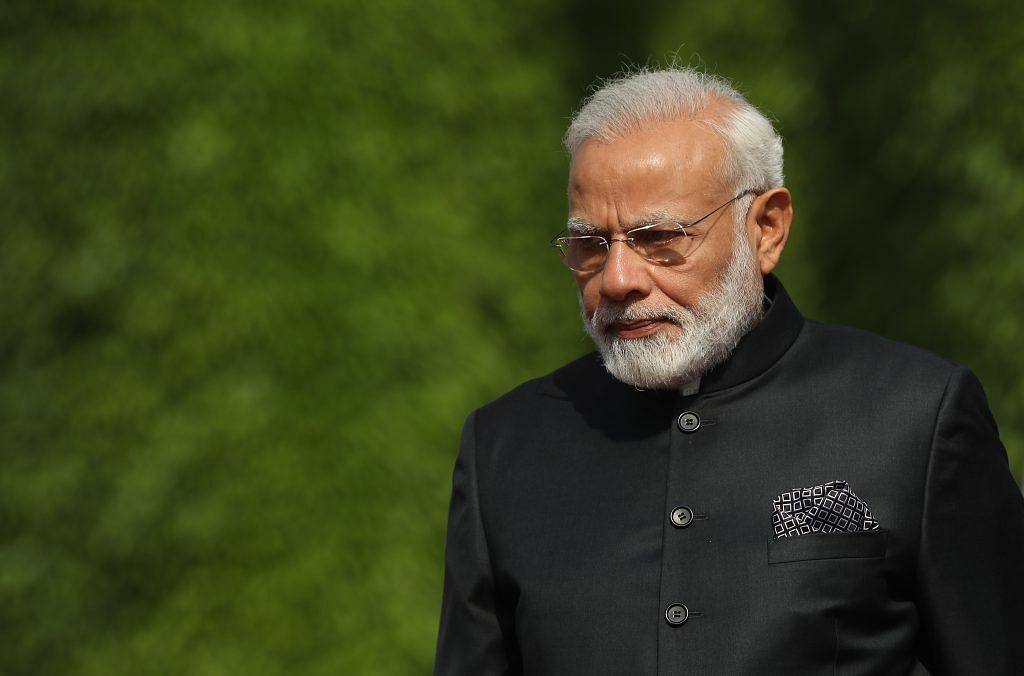Just 11 IAS officers have been empanelled by the government this year for joint secretary posts, down from 87 officers in 2014.
New Delhi: The Narendra Modi government has so far this year empanelled just 11 IAS officers for joint secretary-level posts, a far cry from when officers from the premier service dominated senior positions in the central government’s bureaucracy.
Empanelment is the process of qualifying officers for positions in the Central government, from which some are eventually selected as joint secretaries, additional secretaries, secretaries, etc.
Consider this: In 2014, when the NDA government assumed power, 87 IAS officers were empanelled as joint secretaries. While this number remained the same in 2015, it has consistently dipped since.
In 2016, the government identified 76 IAS officers for appointment at the joint secretary-level, but in 2017, the number fell to just 37.
Also read: For lateral entry, Modi government struggles to get IAS-level quality candidates
The government, instead, appears to be relying on other services for officers to fill the joint secretary-level posts.
To fill the IAS void this year, the Centre has empanelled 45 officers from the Indian Forest Service (IFS), 56 officers from the Indian Revenue Service (IRS) and 70 officers from the Indian Police Service (IPS) for the posts.
This, coupled with the Centre’s decision to court private sector talent through the lateral entry route, for the same posts, has left some members of the Indian bureaucracy rather uneasy.
While empanelment of officers from other services is not a break from practice, the consistently declining number of IAS officers being picked for the joint secretary-level certainly is. For instance, in 2012 and 2013, the last two years of UPA-2, the number of IAS officers identified for appointment to the posts was 84 and 101 respectively.
Also read: Retired IAS officer takes the government to court over lateral entry move
So, is the Modi government consciously trying to dilute the IAS dominance by changing the landscape of central deputation? Or is there a shortage of IAS officers caused by what is said to be the reluctance of officers at the state level to move to Delhi and work under the Modi government?
‘A boon for other services’
For long, other services have complained of discrimination in the rules of empanelment, which favour the IAS. For instance, while IAS officers require 32 years of experience in service to be eligible for secretary-level positions in the Central government, their counterparts require over 34-35 years, before which most officers retire.
As a result, of the 81 secretary-level officers in the central government, only 15 comprise those from other non-IAS services and lateral entries.
If officers from other services are to be believed, in the last few years, Prime Minister Narendra Modi has given several “indications” that he is aware of this chasm.
“There has been no direct statement but there is sufficient indication that the PM is aware that talent is not restricted to the IAS alone,” a senior IRS officer said on the condition of anonymity.
“While we have consistently been demanding better representation, for the first time there seems to be a conscious effort by the government to increase our representation,” the officer added. “Modi is actively trying to break the stranglehold of the IAS at the top.”
The government’s push to other services is not limited to the post of joint secretaries alone. While UPA-2 had empanelled no more than 26 officers from all other services for the post of additional secretaries in the central government, the number has so far risen to 71 in the present government.
All notifications of empanelment of officers for the position of secretaries under the previous government are no longer available on the DoPT website, but officers say no more than 15 officers from services other than the IAS were picked for the secretary-level under UPA-2. This number has risen to 49 under the present government.
“This is not just limited to empanelment. These days, officers from other services are being appointed to important ministries too,” an IFS officer said. “See, there are status-quoist governments and there are non-status-quoist governments. This one is definitely not the first. You can argue whether it is good or bad but this is a fact.”
Limited supply of IAS officers
Some of those in the IAS say there is reluctance among their officers to come to Delhi under this government.
“The supply side is shrinking because life was much better for bureaucrats earlier,” a JS-level IAS officer said on condition of anonymity. “We had a lot more freedom to get projects through… Now, there is constant surveillance, monitoring and tremendous pressure to get stuff done quickly,” the officer added. “No bureaucrat likes to work in a pressure cooker condition.”
As a result, fewer officers want to leave their states and come to Delhi. “Earlier, for vacancies in the central government, there would be 20-25 IAS officers on the offer list… Now, for every 20 vacancies, you will find five IAS officers,” he said.
The “offer list” contains the list of officers whose states are willing to send them to the central government for service.
“It is obvious that Modi wants subservient officers,” another IAS officer alleged. “He thinks officers from lesser-known services will be able to deliver according to him.”
Moreover, there is no scope of “wrongdoing” in this government, the IRS officer said. “If any officer is found to be corrupt, they are immediately moved out… Corrupt officers are apprehensive of statements like ‘na khaunga, na khane doonga’.”
Editor’s Note: A correction has been made in this story. There are 15 secretary-level officers in the Central government from non-IAS services and lateral entries, not 24. The error is regretted.
